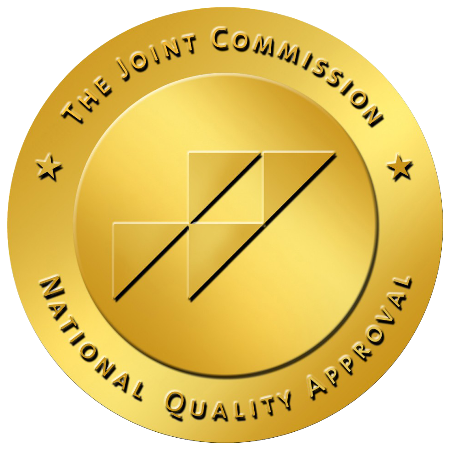Alcohol Withdrawal Syndrome

Heavy drinkers or binge drinkers who suddenly stop drinking or drastically reduce their alcohol intake will experience symptoms commonly called Alcohol Withdrawal Syndrome (AWS).
Unlike a simple hangover, AWS has symptoms that can last for days and range from uncomfortable to life-threatening as the body goes through withdrawal from alcohol.
People who are dependant on alcohol should learn the signs of AWS and seek medical attention if they experience moderate to severe symptoms.
What Is Alcohol Withdrawal Syndrome (AWS)?
Any person who drinks regularly then suddenly stops can experience Alcohol Withdrawal Syndrome.
Typically AWS occurs in adults but can also occur in teenagers or children. The longer a person has been dependant on alcohol, the more likely they will experience alcohol withdrawal syndrome.
Symptoms of AWS can range from mild to life-threatening and should continually be monitored and documented. The risk of complications increases when other medical conditions are present.
What Are Alcohol Withdrawal Syndrome Symptoms?
Symptoms of alcohol withdrawal will vary based on the history and severity of alcohol abuse. Symptoms are both psychological and physical and can begin just hours after your last drink.
Some people who have other physical and mental health conditions may experience symptoms more intensely.
Generally, the three stages of alcohol withdrawal syndrome are:
Mild symptoms
Mild symptoms for alcohol withdrawal syndrome are the most common and begin within six to twelve hours after the last drink. They include:
- Headache
- Sweating
- Alcohol cravings
- Anxiety
- Insomnia
- Vivid dreams
- Loss of appetite
- Nausea
- Vomiting
- Irritability
- Inability to focus of think clearly
Moderate Symptoms
Alcohol withdrawal syndrome’s moderate symptoms occur along with the mild ones and typically start 24 hours after the last drink. These may include:
- Increased heart rate
- High blood pressure
- Shakiness
- Tremors
- Abnormal breathing
- Mild hypothermia involving pale, cold, or numb limbs
- Shivering
- Extreme agitation
It is essential to monitor these new symptoms closely, as they can progress quickly and become dangerous.
Severe Symptoms
All of alcohol withdrawal syndrome’s symptoms can continue while the final stage of withdrawal begins. The most severe form of alcohol withdrawal syndrome is delirium tremens (DT), which can be fatal.
If you are experiencing severe AWS, it is a medical emergency, and you should seek help immediately.
What Is Delerium Tremens?
Delirium Tremens (DT) is the name given to the most intense and dangerous AWS symptoms. DT usually happens within 24 to 72 hours after the last drink.
Signs of delirium tremens include:
- Visual hallucinations or seeing things that aren’t there
- Auditory hallucinations or hearing sounds that do not exist
- Tactile hallucinations or feelings things linke burning, pricking, or stimulation that aren’t happening
- Fever
- Extreme confusion
- Disorientation
- Seizures
According to the American Academy of Family Physicians Foundation (AAFP) (AAFP), DT will happen in about 3% to 5% of people who withdraw from heavy drinking. DT has a mortality rate of 1% to 5% in the United States.

How Is Alcohol Withdrawal Syndrome Diagnosed?
Healthcare providers will take a thorough medical history and perform a physical exam. Some doctors may order blood or a toxicology test to rule out other health conditions or concerns and any other medication or substances.
Healthcare professionals use a series of questions to help diagnose AWS called the Clinical Institute Withdrawal Assessment of Alcohol Scale, Revised (CIWA-Ar). Additionally, the CIWA-Ar helps measure the severity of the symptoms in patients so treatment can be accurate and timely.
The CIWA-Ar looks for and measures the following symptoms on a scale of 1 to 10:
- Nausea and vomiting
- Tremors
- Paroxysmal sweats, or sudden uncontrollable and excessive sweating
- Anxiety
- Agitation
- Tactile disturbances
- Visual disturbances
- Headache or a feeling of fullness and heaviness in the head
- Orientation and clouding of the sensorium, or inability to think clearly and confusion
Some of the questions asked in the CIWA-Ar may include:
- What am I?
- Do you know what day it is?
- Are you more aware of the sounds around you? Do you hear things you know are not there?
- Does light appear more bright or a different color than normal? Does it hurt your eyes?
- Does it feel like there is a band around your head?
- Does it feel like you are going numb or bugs are crawling under your skin?
What Causes Alcohol Withdrawal Syndrome?
Binge drinking, or excessive drinking, and drinking every day, but then suddenly stopping or significantly reducing the amount of alcohol you drink can cause alcohol withdrawal syndrome.
When a person drinks alcohol regularly, binge drinks, or has Alcohol Use Disorder, their brains and central nervous system (CNS), adjust to deal with the amount of alcohol consistently present. When the body is deprived of alcohol suddenly, it throws the whole system off balance and into Alcohol Withdrawal Syndrome.
Simply put, the brain has two main communication signals:
- Excitatory neurotransmitters – the most common of these brain neurotransmitters are epinephrine and norepinephrine, responsible for regulating and transmitting your brain’s neurons. In addition, they regulate blood vessels, heart rate, breathing rate and keep your body’s adrenaline under control.
- Inhibitory neurotransmitters – the most common is our brain’s gamma-aminobutyric acid (GABA) neurotransmitter that regulates the communication between our body’s brain, muscles, nerves, and glands.
With chronic alcohol exposure, both types of transmitters become less responsive to messages from the brain. This delay in communication between the brain and the body is why drunk people have slow reaction times. Long-term heavy drinking causes people to adjust to these delays and compensate or hide them, which most people call developing a tolerance.
Tolerance means that every time a person drinks, it takes a higher amount of alcohol to achieve intoxication and suppress the chemical responses in the brain.
Essentially, your brain is like a traffic controller, and it sends messages to your body using what is called a synapse, like a message carrier. When alcohol is no longer in the system to slow down the synapses, the brain goes into overdrive, and the messages get confused, which leads to a type of shock, contributing to AWS.
Who Is at Risk for Alcohol Withdrawal Syndrome?
People who have an alcohol addiction, engage in binge drinking, or drink heavily regularly are at risk for Alcohol Withdrawal Syndrome.
People who have gone through detox before are sometimes at a higher risk of more severe AWS because of a phenomenon called kindling. Kindling happens when a person goes through withdrawal more than once. The first central nervous system might react to the first time mildly, but the next time the system will respond more intensely and is at risk for an escalated reaction to AWS each time.
Because long-term alcohol users often experience a loss of appetite, they are usually deficient in some vital nutrients. The lack of nutrients also contributes to more severe AWS.

What Is Binge Drinking and Who Is at Risk?
Drinking on a regular basis does not mean a person is alcohol dependant, but it does increase the risk of becoming so.
The CDC defines excessive drinking as binge drinking, heavy drinking, or any pregnant person or person under 21 years old. Here are their guidelines for what is considered heavy drinking or binge drinking.
Heavy drinking is defined as consuming:
- For woman, eight or more drinks a week
- For men, 15 or more drinks a week
Binge drinking is the most common form of excessive drinking.
The signs of binge drinking are consuming:
- For women, four or more drinks on one occasion
- For men, five or more drinks on a single occasion
Alcohol Withdrawal Syndrome Treatments
When treating Alcohol Withdrawal Syndrome, the primary concern is addressing the immediate symptoms and making sure the patient is comfortable and safe. Once the immediate withdrawal is over, the goal of addiction treatments is to maintain sobriety.
Caretakers should tailor treatment plans to how severe the symptoms are and provide the patient the best chance of success.
The three most common ways to treat alcohol withdrawal syndrome include:
- At home/outpatient care— For mild cases of AWS, routinely checking in with a doctor and recovering at home or with a loved one can be less stressful than in a clinical environment. This method should involve a long-term plan of attending support groups, therapy, and anything else doctors recommend to prevent a relapse.
- Hospitalization or residential treatment— Extreme, high-risk, or recurring AWS will require inpatient care and monitoring. If a patient is dehydrated or malnourished, they can receive intravenous fluids and nutrients along with medications to alleviate the alcohol withdrawal symptoms if necessary. Read more about residential treatment and how Northridge Addiction Treatment Center’s residential treatment facility may be the perfect fit for you or your loved one.
- Medications— Several effective sedatives and supplements exist to ease the immediate symptoms of AWS and the longer-lasting effects and urges to start drinking again. Only medical professionals should prescribe medication. Read more about Northridge Addiction Treatment Center’s medication-assisted treatment program.

Alcohol Withdrawal Syndrome Medications
Currently, in the United States, benzodiazepines are the only medication that meets the requirements for alcohol withdrawal syndrome.
Medications used to treat AWS should set in quickly, last a long time, and not interact with any alcohol present in the patient’s system. Additionally, the medications should not have the potential for abuse or any impairment side effects.
Benzodiazepines are effective because they mimic alcoholic effects in the GABA receptors, which helps immediate symptoms and future cravings.
Some of the most common benzodiazepines prescribed for AWS are:
- Diazepam
- Chlordiazepoxide
- Lorazepam
- Oxazepam
- Midalozam
How Do I Prevent Alcohol Withdrawal Syndrome?
With proper care and a long-term plan to avoid drinking again, most people fully recover from AWS.
If you already drink alcohol regularly and plan to quit, consult with a doctor and be completely honest about all of your habits and concerns. Together you can assess your risk and plan a course of action.
Northridge Addiction Treatment Center’s team of medical professionals and substance abuse counselors knows withdrawal can be the most challenging part of recovery. At NATC, we offer medically supervised detox to provide a safe and comfortable environment surrounded by caring specialists.
In addition to medical detox, our medication-assisted treatment and co-occurring disorders program ensure every resident at NATC has a unique treatment plan tailored to heal the core of the reason behind their substance abuse.
One of the biggest reasons people don’t seek professional help is fear it will be too expensive. We can check if you have insurance that covers treatment using our confidential insurance verification form.
Reach out today with any questions and concerns. Our admissions specialists look forward to starting you on a journey to a lasting and meaningful recovery.
Find Meaningful Recovery
Our caring and compassionate specialists are eager to help you comfortably navigate this journey to recovery. Our individualized treatment plan, programs, and therapies may be a perfect match for you or your loved one. Let us assist you in living the happy life you deserve. It starts with a phone call.




